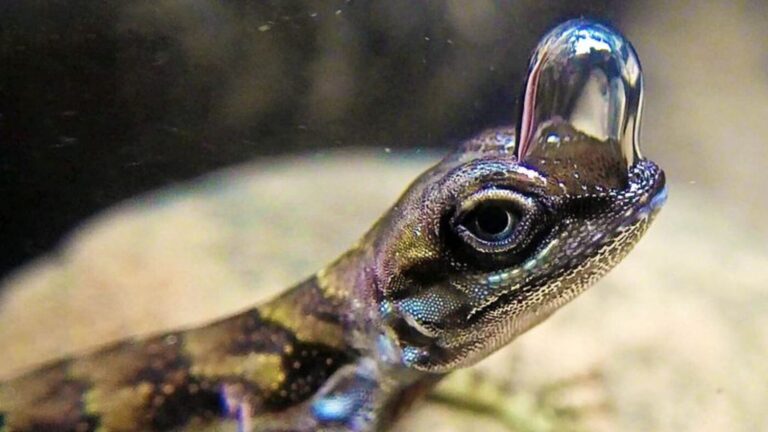Everything You Need To Know About Fossas
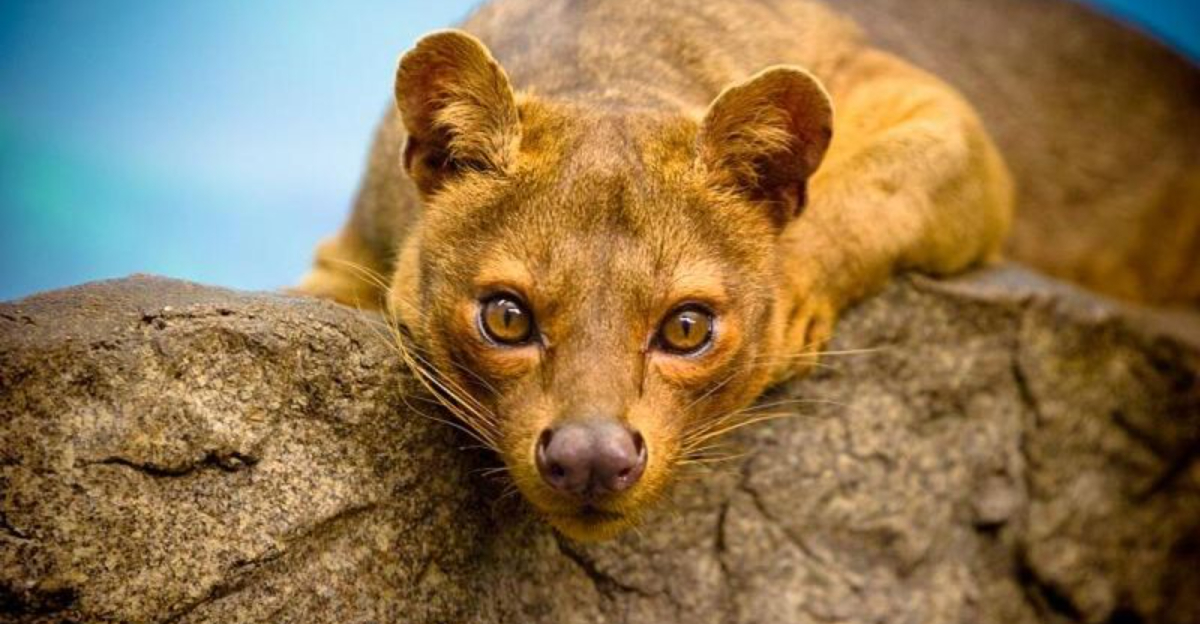
Ever wondered about those sleek, cat-like creatures with mongoose qualities that roam Madagascar’s forests?
Fossas are mysterious predators that few people know about, yet they’re fascinating animals with remarkable abilities. These enigmatic hunters sit at the top of Madagascar’s food chain and have evolved some truly unusual characteristics worth discovering.
1. Not Cats, Not Mongooses – Just Unique
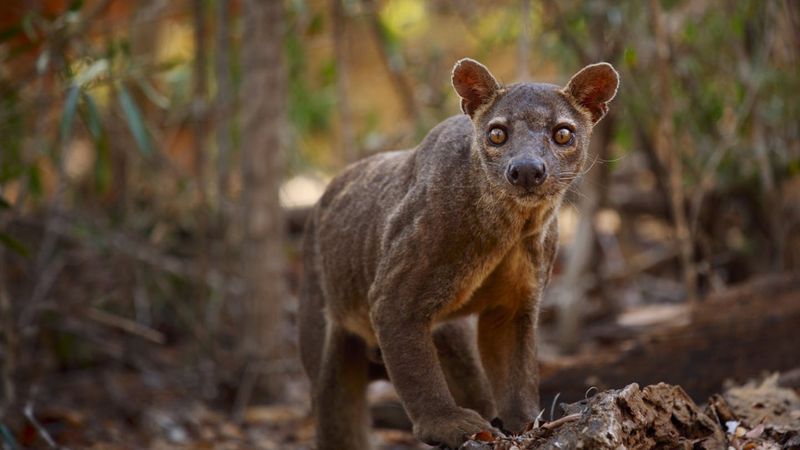
Looking like a strange mix between a cat and a mongoose, fossas actually belong to their own distinct family. These carnivores evolved separately on Madagascar for millions of years!
Their closest relatives are actually mongooses and civets, but they’ve developed cat-like features through convergent evolution – nature’s way of creating similar solutions independently.
2. Masters Of The Trees
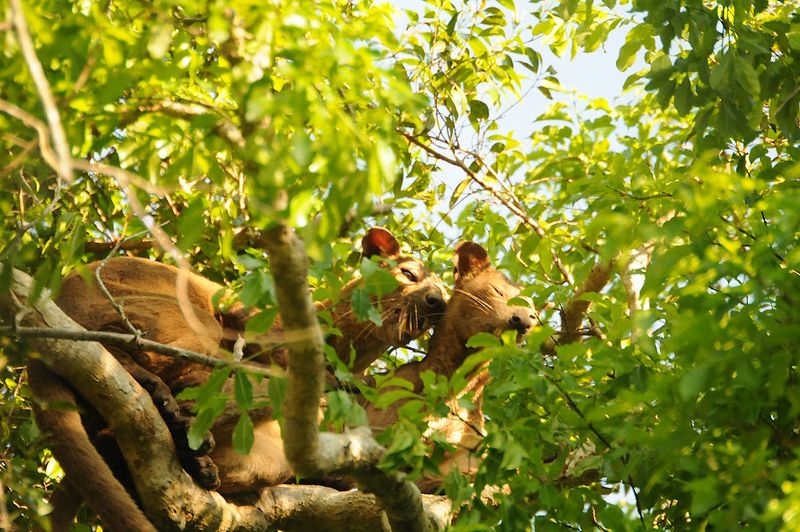
Watch a fossa move through the forest canopy and you’ll be amazed by its agility. With flexible ankles that rotate 180 degrees, these hunters can run headfirst down trees and leap between branches with incredible precision.
Their long tails, nearly matching their body length, serve as perfect balancing tools during these acrobatic forest pursuits.
3. Lemur’s Worst Nightmare
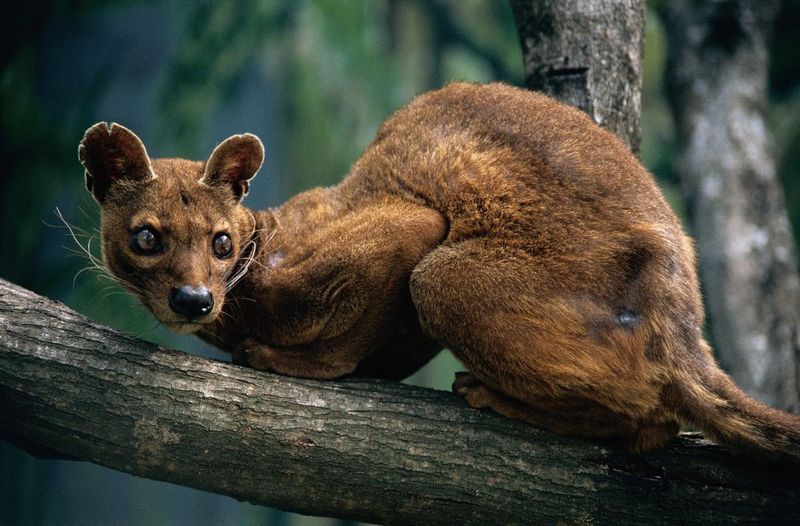
Lemurs tremble at the mere scent of fossas approaching. As Madagascar’s top predator, fossas have specialized in hunting these primates through the treetops.
Their hunting strategy combines stealth, speed, and remarkable timing. A fossa can silently stalk a lemur for hours before making its lightning-fast attack, often capturing prey much larger than itself.
4. Seriously Strange Mating Habits
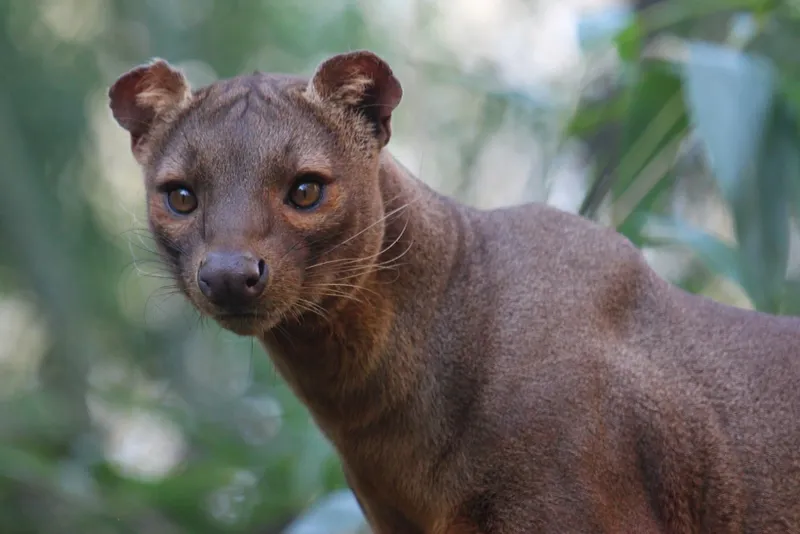
Buckle up for some bizarre biology! Female fossas develop temporary masculine features during adolescence, including an enlarged pseudo-penis that eventually shrinks away.
Scientists think this unusual development might prevent premature mating. Their actual mating ritual happens in trees, where females stake out a branch and multiple males visit over several days.
5. Vocal Virtuosos
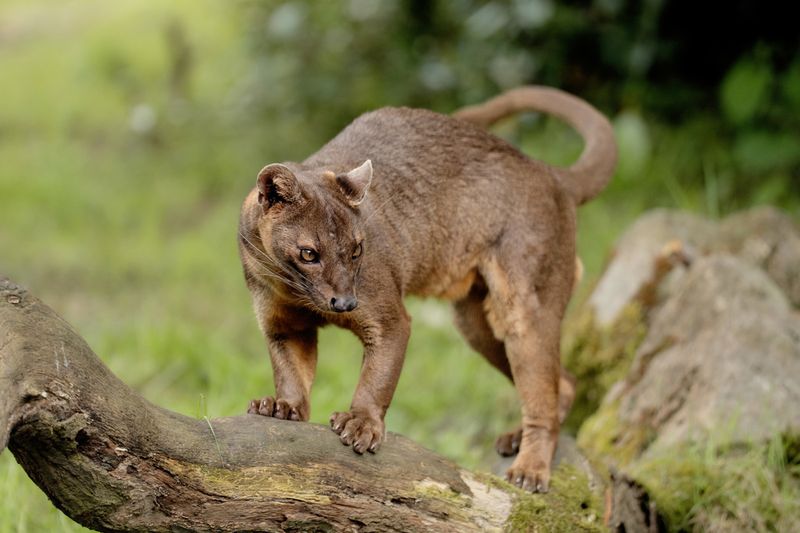
From purrs to yowls, fossas communicate through an impressive vocal repertoire. Their most distinctive sound is a eerie, prolonged moan that echoes through the forest to mark territory.
These vocalizations help solitary fossas locate potential mates during breeding season. They also use scent marking extensively, rubbing specialized glands against trees to leave their signature smell.
6. Endangered Status
Fewer than 2,500 adult fossas remain in the wild today. Habitat loss from slash-and-burn agriculture has devastated their populations, reducing their range to isolated forest fragments.
Some local Malagasy communities also hunt fossas due to the belief they prey on livestock. Conservation efforts focus on protecting remaining forest corridors and changing local attitudes toward these misunderstood predators.
7. Supersized Cousins

Ancient Madagascar once hosted giant fossas three times larger than today’s version! Paleontologists discovered fossils of these mega-predators that hunted now-extinct giant lemurs.
These prehistoric fossas disappeared relatively recently – perhaps just 2,000 years ago – coinciding with human arrival on Madagascar. Modern fossas represent the last surviving member of this once-diverse family.
8. Smell Hunters
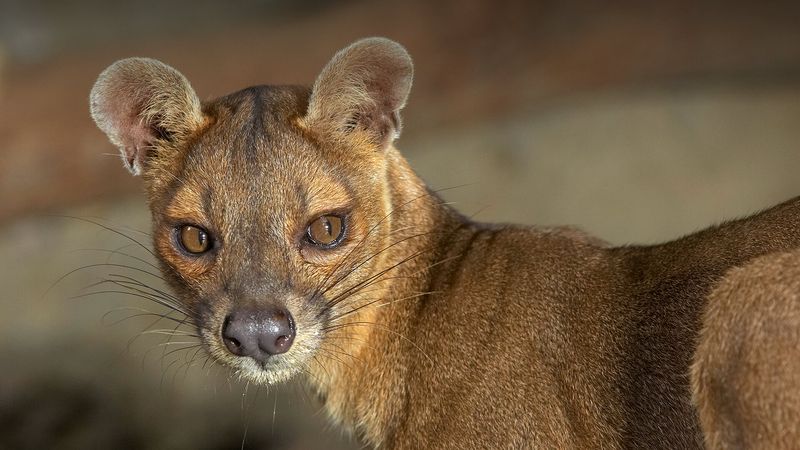
Forget fancy night vision – fossas hunt primarily through their extraordinary sense of smell. Their elongated snouts house powerful olfactory receptors that can detect prey hiding in dense vegetation.
A fossa can follow scent trails for miles through the forest. They often hunt at dawn and dusk when their keen noses give them an advantage over prey that relies more heavily on vision.
9. Omnivorous Opportunists
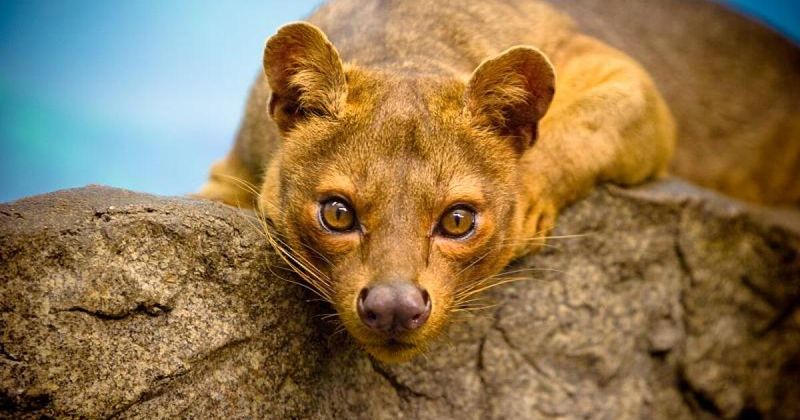
Though famous for hunting lemurs, fossas aren’t picky eaters. Their diet includes over 50 different species, from tiny mice to wild pigs and even reptiles.
During fruit seasons, they’ll happily supplement their carnivorous diet with sweet mangoes and other forest treats. This dietary flexibility helps fossas survive seasonal changes in prey availability throughout Madagascar’s varied landscapes.
10. Cultural Significance
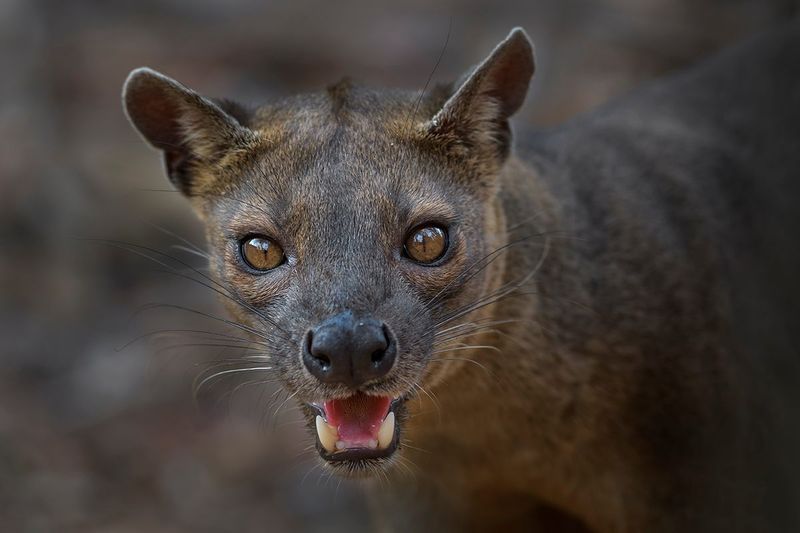
Fossas feature prominently in Malagasy folklore as mysterious and sometimes supernatural creatures. Many local legends describe them as shape-shifters that can transform into humans at night.
Some communities believe fossas whisper to lure people into the forest. These cultural beliefs have sometimes complicated conservation efforts, though education programs are helping bridge the gap between tradition and science.
11. Solitary Lifestyles

Except during brief mating periods, fossas live completely solitary lives. Each adult maintains a vast territory spanning up to 4 square miles, marked with scent and defended vigorously against intruders.
Mother fossas raise their cubs alone in dens hidden among rocks or hollow trees. Young fossas stay with mom for about a year, learning hunting skills before venturing off to establish their own territories.
12. Incredible Athleticism
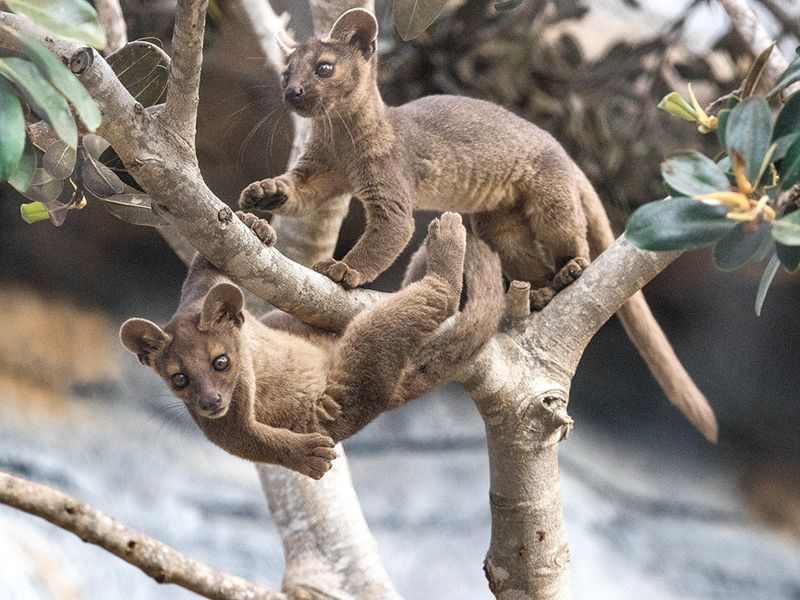
Pound for pound, fossas rank among nature’s most impressive athletes. These 20-pound predators can leap over 20 feet between trees and sprint at speeds exceeding 35 mph through dense forest.
Their muscular build combines the strength of a wolverine with the agility of a monkey. Fossas can hang by their hind feet while using their front paws to manipulate prey – a remarkable feat of coordination.
13. Hollywood Fame

Remember those scary predators from the movie “Madagascar”? That’s right – fossas gained international recognition when DreamWorks featured them as antagonists in their animated franchise.
While the film took creative liberties, it introduced millions to this little-known species. Conservation groups reported increased interest in fossa protection following the movies, showing how pop culture can actually help endangered wildlife.

